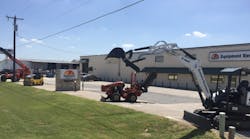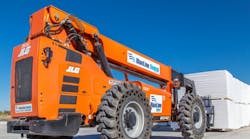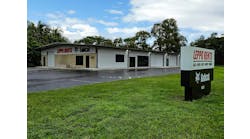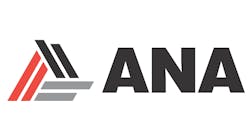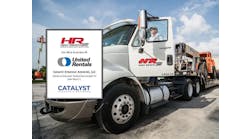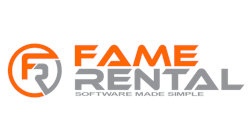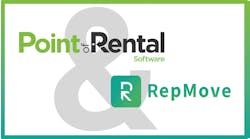As we look ahead to what appears to be a promising year in the equipment rental industry, RER surveyed a couple of hundred of our readers about what they expect in the coming year. Here are some of their comments.
How was 2017 for your company?
Bob Kendall, CEO, Star Rentals: 2017 was a very good year for Star Rentals by any sense of measurement. We somewhat stumbled out of the blocks with the worst winter for rain and snow since such records have been kept in the Pacific Northwest. But we finished strong and went into our Q1 (October-December) with a lot of momentum. Q1 was a record period for Star and we look for the balance of Fiscal 2018 to be very strong as well.
Frank Bardonaro, chief operating officer, Maxim Crane: Maxim Crane had an epic year. We had an incredibly safe year for our team and that is our No. 1 goal. We were able to continue our growth and expansion with successful integration of several new additions to the Maxim family of companies. This included the completion of the AmQuip, Coast and Essex acquisitions as well as nearly $100 million of additional equipment.
David Schmid, president, Ecco Equipment: Great. The best since 2007.
Rob Cox, general rental manager, Ohio Cat: RECORD YEAR! Revenues and profit.
Bill Thompson, chairman, Thompson Pump: 2017 was a spectacular year for Thompson Pump. We experienced a resurgence in activity spanning almost every market segment, but construction-related projects topped the list. Sales were up, rentals were up, profitability was strong, product development continued at a rapid pace, and hiring and training continued on an upward trajectory. The only area in which we’ve seen a minor downturn is with our export activity, and, that seems to be improving as the U.S. dollar weakens.
Mike Appling, TNT Crane & Rigging: Better than ‘15 and ‘16, but not up to expectations.
Brian LaLonde, LaLonde Equipment: 2017 was a record year for us. Both top line sales (rental) and bottom line profit were at all-time highs.
John Grill, CEO, Aaction Rentals: We ended up being up approximately 17.7 percent in volume and profit percentage was even better.
Glenn Leppo, Leppo Group: We had a great 2017. Rental grew about 19 percent and our overall volume increased 14 percent. We set annual records in both rental and sales and most locations had a record year.
Chris Watts, president and CEO, Sunstate Equipment: 2017 exceeded our growth expectations, as I am sure it did for many in our in our industry. Numerous larger markets continued to grow beyond already exceedingly high levels of activity, with no slow-down in sight.
Jamie Carson, Road Machinery, general manager, sales and rental: Rental revenue was down year over year due to our selling the New Mexico and West Texas regions to Komatsu, including the machines in that territory, but profit and utilization were significantly up, about 6-7 percentage points or roughly 11-12 percent overall.
Bill Gex, CEO, Anderson Equipment Co.: 2017 was a very positive year for Anderson Equipment. There was renewed equipment demand in important market segments such as energy, scrap and forestry. Furthermore, the market for construction equipment was strong throughout the year.
Asterios Satrazemis, CEO, BlueLine Rentals: 2017 was an exceptional year for BlueLine, we hit records that we’d never hit before in the company’s history, record levels of fleet on rent, record levels of time utilization, it was the safest year in the company’s history. Really a transformational year for us.
What are your expectations for your company in 2018?
Bardonaro: Maxim is looking forward to 2000-GREATteen! We feel our team is positioned well to fully execute our plan for 2018. Our turn-key services, geographic footprint and customer outlook for the year is extremely positive.
Thompson: Unless the mid-term elections in November create a change in direction, we expect 2018 to be even stronger than 2017. We are planning expansion of our manufacturing capabilities, improving our efficiencies, enlarging our rental fleet with more pumps and equipment, continuing our product development program, and hiring a significant number of skilled personnel to support the anticipated high activity
Grill: We expect 2018 to be even better. We budgeted about 20 percent growth for the following reasons: We added approximately $3 million in inventory; we had a major fire in close proximity to our stores that destroyed 5,000 plus or minus homes or structures; many of our good customers are already “booked” for 2018; and we have a great staff of long-term personnel.
Lance Rezulli, High Reach Co.: We are expecting 2018 to be like 2017 and most likely another record year, with approximately 5 to 10 percent growth.
Leppo: Continued growth, although at a slower overall pace unless we actively pursue additional growth paths that we are considering.
Carson: I am leery moving into CY2018 because the market growth was so spectacular at the end of CY2017. We also had significant pickups in rental time utilization, dollar utilization and revenue due to the fires in northern California, which is unlikely to repeat. Overall I expect us to grow our rental fleet roughly 15 to 20 percent to capture more of our market. Revenue growth expectation is along that same line, however I do expect time utilization to drop slightly as we grow our fleet which will equate to a smaller gain overall in revenue.
Steve Meadows, Bobcat vice president, Berry Companies: We expect continued growth but at a lower rate. Maybe 5 percent (compared to nearly 12 percent in ’17).
Gex: We feel the demand for equipment will remain strong in 2018 and we are forecasting a modest increase in revenues for the year.
Satrazemis: More of the same. I think early indications are that 2018 is going to be a strong year. When we looked at 2017 at the beginning of the year, I always thought ‘18 would be a good year, now things have really taken shape, I am even more confident.
Rob Pedersen, A Tool Shed: Continued growth at a steady pace but slightly lower than 2017 due to tax changes and their effect in our market area.
What do you base your predictions on?
Kendall: Customers are very optimistic with expanding backlogs and it is not just non-residential construction. We are seeing continued expansion in governmental, institutional, and industrial spending as well.
Bardonaro: Everyone can read the same reports and data. We focus on our customer feedback and strong relationships with our sales force to assist in our projections and manage our expectations. Based on our current backlog and customer activity, we are confident in 2018 being a strong growth year for Maxim and our customers.
Schmid: Current level of activity is higher than this time last year. Economic reports are positive.
Thompson: We base our optimism on quite a few indicators: We’re seeing a phenomenal increase in new construction projects – many already in progress, others just starting and many more on the drawing boards; the mines, pits and quarries seem to be on the upswing; the oil & gas and other energy-related markets continue to improve; governmental activity has picked-up dramatically as tax revenues, generally, have proven to be better than expected; the new tax and jobs plan supports growth and expansion as well as encouraging investment in equipment for businesses; it targets infrastructure needs and it provides financial relief for individuals; economic reports and forecasts are generally positive and our customers indicate that they will be expanding their rental fleets and will be purchasing new equipment because they see a strong economy going forward. The elimination or reduction of unnecessary and overly costly regulations has just added icing to the cake.
LaLonde: We are increasing our rental rates; demand is currently strong and several big projects are starting in 2018; many projects are now requiring Tier 4 machines and we have positioned ourselves well with late model equipment; oil and gas business is rebounding which should help our Bakersfield branch.
Rezulli: Our expectations are based economic reports and predictions and much interaction with top customers in each of the Florida markets we serve. The majority of our customers interviewed have backlogs well into the year already with a few into 2019.
Leppo: First, feedback from our customers on their activity levels, backlogs and growth plans. I also have a few statistics I watch that have proven pretty reliable leading indicators. Finally, although we don’t yet have a ton of confidence in their forecasts, we have started utilizing an outside firm to project demand. The combination yields a projected growth roughly half what we saw in 2017.
Watts: We gather field data from each market, identifying significant jobs, customer relationships, and other opportunities that give us a pretty clear idea of what to expect. We of course gut check this against Dodge and Global Insights to verify if our best guess is at minimum directionally accurate as compared to both.
Carson: Customers seem very optimistic, especially concerning the reduction in corporate taxes. I am expecting the market to be flat to slightly down (which is still a big market compared to two years ago) however I have heard frequently that 5 percent growth is possible.
Meadows: We have heard from a few economists throughout the year, and even use one of our own. They do seem to be mostly optimistic and some of our bullish mood is based on this. We also listen closely to our division leaders who are in constant contact with their customers. All of these indicators seem to be positive for 2018 at a steady pace.
Fred Daniels, CEO, Ames Taping Tools: Our plan is built around housing start growth of just over 3 percent, along with new location and products adding revenue. Customers are very confident that 2018 will be a good year for them.
Satrazemis: We all look at the same things, right? Nonresidential construction stats, ABI information, what you’re seeing in starts for nonres, all are great indicators. And we overlay that with what I’m hearing from my team on the ground, and we’re feeling like ’18, unless something unforeseen for everyone happens from a macro standpoint, looks like another solid year for construction, and another solid year for BlueLine.
Henry Gray and Travis Smith, Stowers Cat: Our customers are excited about 2018. The State of Tennessee passed a new Highway Bill to increase funding for roads. Customers are now seeing the opportunities to work on larger road projects and other projects in conjunction with this bill.
Any overall thoughts about the economy in the foreseeable future?
Kendall: I told our shareholders last year in December that we were “late cycle” in the overall economic cycle and suggested if it were a baseball game we were likely in the 8th inning. I just told them last month that we are now likely headed for “extra innings”!! We think this will move on into 2019 as well.
Bardonaro: We feel very bullish on the next few years. We have visibility on utilization for nearly 75 percent of our fleet out for the next 12 to 18 months. Based on this outlook, we feel that 2018 and 2019 should be very good years for Maxim. Obviously, the industry can still benefit from some consolidation and infrastructure spending.
Thompson: So long as the population continues to increase, the infrastructure continues to deteriorate and the expectations of Americans continue to rise, our economy should be very strong. My fear is that we will succumb to political vagaries and reverse course.
Jamie Cowin, Cowin Equipment: Both locally and nationally there seems to be a lot of confidence in the economy. In our area there is not one dominant driver, like energy for example, but there is a pretty strong sense of overall vibrancy. Most contractors have plenty of work. Things are active. I don’t see anything on the immediate horizon which is fearsome or suggestive of a turn.
Grill: We are very optimistic. The new tax bill will likely change how we depreciate our equipment.
Leppo: I think the overall economy will continue to grow slowly in 2018 and likely stall in 2019 as labor shortages, increased labor costs, increasing interest costs and other factors provide some drag. I am not saying a severe recession in 2019, but likely a flattening or even slight recession.
Meadows: Things remain positive for 2018. Markets are strong and tax reform should keep things stepping lively for the foreseeable future. Of course any disruptive world events could change this.
Gex: The business environment has improved materially over the past year and customers are optimistic about 2018. Also, the changes to the tax code should have a positive impact on many of Anderson’s customers as they will have enhanced cash flow to invest in their operations.
Daniels: Continued steady growth for the next two years, followed by a slight down in 2020, but still at a level that will drive solid business results is what we see.
Satrazemis: I think the tax bill will extend the cycle; I’m not alone in that estimation. Before I would have thought that 2018 would be good, now I think it will be even better than good. And I just think the cycle has gotten extended now, the tax bill has given a lot of additional grist for the mill if you will. Going to 2019, the possibility of an infrastructure bill could give it even more of a tailwind. Low interest rates continue to help spur investment as well so you’re seeing people aren’t wanting to keep money on the sidelines so that’s going into a lot of the construction and building activity that we see.
Did your company make any significant changes or additions in software, telematics or other technology in 2017? Do you plan any in 2018?
Bardonaro: This is a great point to bring up. As we continue to expand via acquisitions as well as new cap-ex, we began implementing several new programs in 2017 and expect to increase that effort in 2018 regarding telematics, RFID, and other logistical enhancing products.
Kendall: Nothing new other than further implementation of Point-of-Rental’s suite of offerings. Looking to upgrade our Customer Relationship Management tools and introducing a new Maintenance App that will allow equipment inspections and maintenance to be done electronically.
Schmid: We implemented a mobile app for our rental software. All new dozers and motor graders will be Topcon or Trimble ready.
Thompson: We expanded our capabilities in telemetry, remote monitoring, remote controlling and SCADA (Supervisory control and data acquisition). From a sales and management standpoint, we continued to develop and expand our CRM capabilities and usage. 2018 should see more of the same.
Grill: Technology in 2017: We changed most all of our stores over to an alarm system that utilizes high resolution cameras to record and observe what is going on in our stores day and night. Technology in 2018: We budgeted for a new dispatch module, we will add some more GPS tracking systems, and we will add a second server that mirrors the first one in the event of server failure.
Leppo: Our energy sector rental division (Razor Rents) has telematics on every machine with a battery. The level of functionality (from just GPS to diagnostics) is dependent on how well the different systems talk. We have an R&D project in our construction division to determine our path forward with telematics. Leppo Rents utilizes the same system as Razor Rents in most larger equipment, but as some of the smaller equipment now has telematics factory-installed, we need to decide how to blend the different systems.
Carson: Not significant but we did start using Rouse Analytics which has been very helpful in tracking average rental rates. Can’t say that I liked all the results on how we compared, but better to know than to guess. We additionally started using a new CRM system, CRM Series, which has been great for sales but still needs refinements to be a solid rental CRM.
Meadows: Bobcat is rolling out telematics on every machine. We are working to understand what processes we will need to develop to support this new (to Bobcat) technology. We do see this as an opportunity.
Daniels: We added store cameras to all of our locations. This enables us to see exactly what is going on in any of our stores at all times.
Satrazemis: A huge year for us on the software/technology side. We launched our concept to go around building simple inter-connected tools that make it easier to do business. A mobile first approach: We launched our customer app, which has been fantastic, we got customers who are on it all the time, they are checking accounts, they are taking things off rent, they’re looking at what’s available, we’re still seeing a lot of them that make that final mile by making a phone call, but the activity we’re seeing on the app we’re really pleased about how customers are staying more inter-connected with us. We’re getting more and more customers to see the value of having our app on their phone, whether they’re a single owner general contractor or they’re a large multi-job, multi-state customer, the app is useful for them at both ends of those spectrums.
We also launched our driver service hub, so now all drivers have iPads, customers can sign their contracts right on the iPad and we’ve got a dispatch system that is inter-linked with that, and it’s all built on top of salesforce.com, which is our CRM, so all the customer records are contained in the same place. It has helped us to improve our efficiency and the reliability of our delivery service.
How do you see rental rates in your market or markets in ’17 and coming in ’18?
Kendall: We do see a slight uptick in rental rates coming. Candidly, the market remains modestly over-supplied with too much [equipment] sitting in the winter months and only a small seasonal window of ultra-high utilization. Not much opportunity to push rates up. Likely a 1- to 3-percent increase overall.
Bardonaro: Obviously, there is always pricing pressure. The key issue that the crane rental industry continues to battle is the actual ROI needed based on new crane rates to ensure the sustainability of our fleets. The price for new equipment is up nearly 400 percent in some major categories and yet our equipment rates remain fairly flat. We should all look at the public data available for some of the general rental companies that are able to generate 4 percent to 6 percent per month ROI on their core fleet as well as 160-hour rental months. These are major issues for the industry and some that we all need to see improve.
Cox: In 2017 rates went up 3 to 5 percent and I think that will continue in 2018.
Rezulli: Rental rates have been on the rise over the past three years and we sense they will be essentially flat this year overall. There may be exceptions to certain model types that will allow for increases. There also has been new competitors moving into the markets with very little brand recognition, so we expect to see them try to buy their way into the market with lower rates.
Satrazemis: We saw a good rate environment, as we talked about, utilization levels were very strong, so typically one follows the other, so as utilization levels stayed strong, we were able to see rates improve across all of our markets. Every market in which we do business, we saw rates improve. They didn’t just improve for us but for the industry overall. It’s clear that demand is outpacing supply in the rental space at the moment, which is good because as you know the two were inverse not that very long ago.
Pedersen: Up 8 to 10 percent due to economic conditions, minimum wage laws and increased equipment costs.
